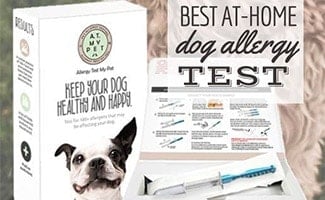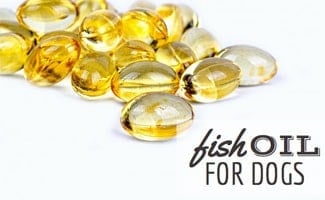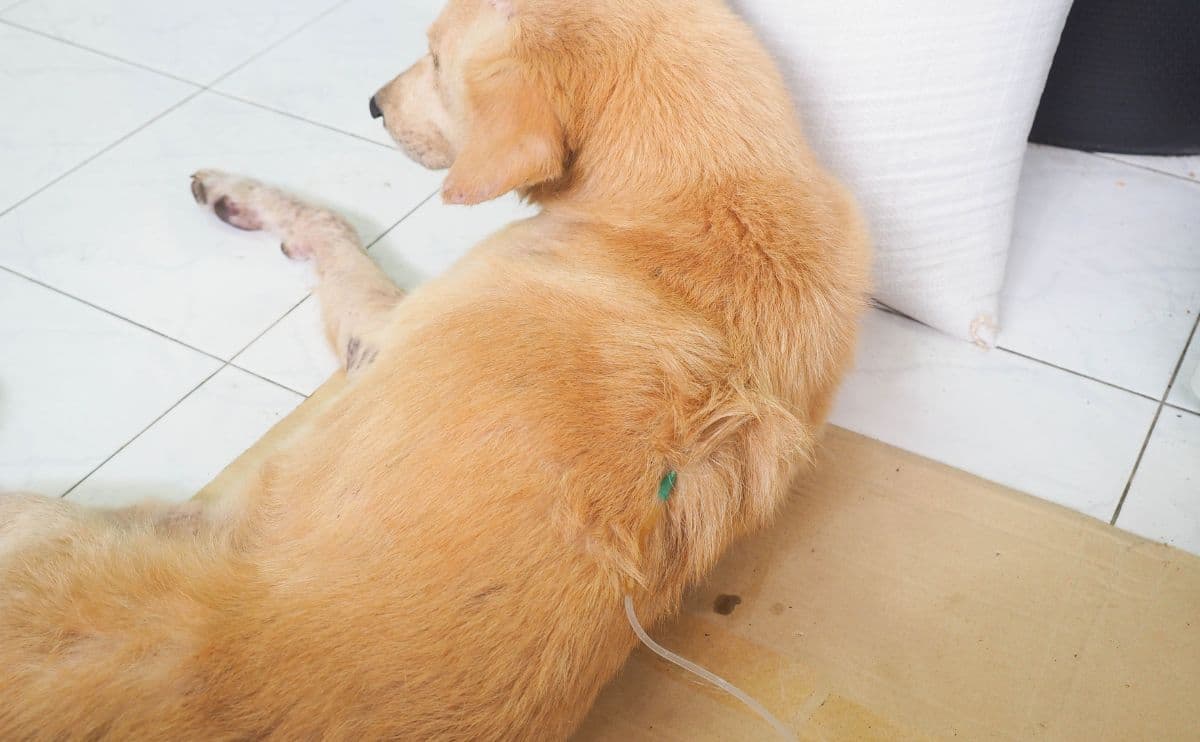When you purchase through links on our site, we may earn a commission. Here’s how it works.
Is your dog greasy, itchy, or smelly at the moment? If so, he might have a condition called seborrhea. It’s always important to get your veterinarian to examine your dog as there are many things to consider when treating this condition. Let’s explore these in more detail and what causes canine seborrhea in the first place.
What Is Seborrhea In Dogs?

Seborrhea, also known as seborrheic dermatitis, is a skin disease that commonly affects dogs. It is a condition that affects areas of skin that are rich in sebaceous (oil-producing) glands. These glands either go into overdrive, producing too much sebum, or their function becomes reduced, leading to dry and irritated skin.
People can also suffer from similar conditions, including seborrhea capitis, which is seborrhea of the scalp (causing dandruff and cradle cap in infants).
What Causes Seborrhea?
There are many different reasons why your dog might develop seborrhea. This condition can be either primary or secondary to something else that’s going on.
Primary Cause Is Inherited
Seborrhea can be an inherited condition, with the exact cause undetermined (also known as ‘idiopathic’). It is quite rare, but some breeds are more prone to idiopathic seborrhea than others, including American Cocker Spaniels, English Springer Spaniels, German Shepherds, Golden Retrievers, West Highland White Terriers, Basset Hounds, and Shar-Peis. Most of these dogs have non-itchy skin.
Secondary Suggests An Additional Health Concern
Secondary seborrhea occurs due to underlying health conditions and may or may not be itchy, depending on the cause.
The following conditions can make seborrhea more likely to occur as a secondary problem:
- Allergies
- Parasites such as mites and fleas
- Hormonal conditions such as hypothyroidism
- Fungal infections
- Obesity
- Dietary deficiencies
What Does Dog Seborrhea Look Like?

There are two types of seborrhea in dogs, seborrhea oleosa (oily seborrhea) and seborrhea sicca (dry seborrhea). Most dogs suffer from a combination of both types, so the symptoms can be a mixture of dry and greasy skin.
Here are some symptoms of canine seborrhea to be aware of:
- Large flakes of dry skin (dandruff), often found on your dog’s face, back, and sides. It may also be seen on your dog’s bedding.
- Red, inflamed skin which is excessively itchy.
- An unpleasant yeasty odor, caused by the grease from oily patches and any secondary infections (bacteria and yeast can worsen odors).
- Crusty thickened areas on the skin.
- Hair loss (alopecia).
How Is It Diagnosed?
Your veterinarian will start by examining your dog for classic signs of seborrhea. As well as checking your dog’s skin, they will also examine the rest of your pet to check his overall health status.
Depending on their findings, they might suggest some additional tests, which could include:
- A blood test to check your dog’s organ function and to check his thyroid hormone levels
- Samples from the skin to culture for any bacterial or yeast infections
- Skin scrapes to examine under the microscope for parasites
- Biopsy of the skin to look for deeper infections, cancer, and other diseases
If all of the possible secondary conditions are ruled out, then a diagnosis of primary (idiopathic) seborrhea is made. Animals with genetically related primary seborrhea may develop this condition at a young age.
How To Treat Seborrhea In Dogs
Seborrheic dermatitis treatment revolves around treating the symptoms and curing the underlying cause (in the case of secondary seborrhea).
Shampoo

The most common treatment used in the management of seborrhea is medicated antiseborrheic shampoos. These seborrhea dog shampoos help to gently lift the scurf on your dog’s skin and reduce the risk of additional flakes and crusts forming. They cleanse your dog’s fur and also help to reduce secondary infections.
According to the Merck Veterinary Manual, “Shampoo therapy can decrease the number of bacteria and yeast on the skin surface, the amount of scale and sebum present, and the level of pruritus; it also helps normalize the epidermal turnover rate.”
Ingredients commonly found in these shampoos include coal tar, salicylic acid, benzoyl peroxide, and fatty acids. The exact shampoo prescribed may depend on the degree of seborrhea your pet has. You may use other products in conjunction with shampoos, such as sprays and moisturizers (emollients), to help prevent your dog’s skin from drying out. Your veterinarian will advise you on how frequently to use both shampoos and moisturizing products.
Other Options

Other medications that you can use in the treatment of seborrhea include measures to treat the underlying cause of the disease:
- Anti-parasitic products to treat ectoparasites like fleas and mange mites.
- Treatment for hormonal conditions like hypothyroidism will consist of oral medications and monitoring with regular blood tests.
- Treatment of underlying skin allergies. You can manage allergies in a multitude of ways, depending on what the underlying trigger is. Some dogs will require strict hypoallergenic diets. Others may require immunosuppressive drugs like ciclosporins or glucocorticoids. Your veterinarian will discuss the various options available for your pet. To get a clear picture of your dog’s allergies, you might want to take an at-home dog allergy test.
- Antibiotic and antifungal medications to treat any secondary infections.
In cases of primary idiopathic seborrhea, one study has suggested that oral retinoid therapy may be helpful in its treatment. - Vitamin A supplementation is also used in some cases.
Are There Any Home Remedies?

You should always follow advice from your veterinarian about the treatment of your pet’s condition. Discuss any canine seborrhea treatment home remedies with your veterinarian — these must not take the place of any prescribed medications. However, the following natural therapies may be helpful in the management of seborrhea.
- Omega-3 fatty acid supplements help to act as natural anti-inflammatories and help support healthy skin and coat conditions.
- Other dietary supplements may be useful to supplement vitamins such as A, C, and E to help with general immunity, health, and skin conditions.
- You can apply coconut oil to itchy areas to help soothe and moisturize. Choose an unrefined oil, known as virgin coconut oil.
- Regular bathing with soothing oatmeal-based shampoo may help irritated skin.
Never use human shampoos or products on your pet unless with express agreement from your veterinarian.
What Is The Prognosis For Canine Seborrhea?
Some cases of canine seborrhea can be cured with appropriate treatment if you seek help promptly. Treating the underlying cause of seborrhea can lead to a full resolution in many cases.
However, if your dog suffers from the less common primary idiopathic seborrhea, he may require long-term management strategies for his skin. Symptoms can usually be kept under control in these cases if you follow your veterinarian’s recommendations.
Can I Prevent It?
You can’t prevent genetically inherited idiopathic seborrhea. However, not breeding from animals that suffer from seborrhea and buying from good breeders that wouldn’t reproduce from affected animals, can reduce the risk of seborrhea in your dog. If you’re buying a puppy from a breed prone to seborrhea, make sure to meet both of the parents and give them a once-over to reduce the risk of purchasing a puppy with problems.
You can lessen the risk of other dogs getting seborrhea by using parasite preventatives, feeding a good quality commercial diet made to AAFCO standards, maintaining a healthy body weight, and managing any underlying allergies as recommended by your veterinarian.
Does Your Dog Have Other Skin Problems?
Is your dog’s skin frequently itchy or rashy? Dogs suffer from a host of skin problems in addition to seborrhea. If this sounds like your pup, he could be suffering from skin allergies from something in his food or environment. Skin infections are also common in dogs, so you may want to know the signs of infection before it leads to seborrhea.
You must take your dog to your veterinarian if you suspect he has seborrhea, an infection, or allergies to receive a proper diagnosis and have appropriate treatment, which depends on the cause of their condition.
Tagged With: Skin

